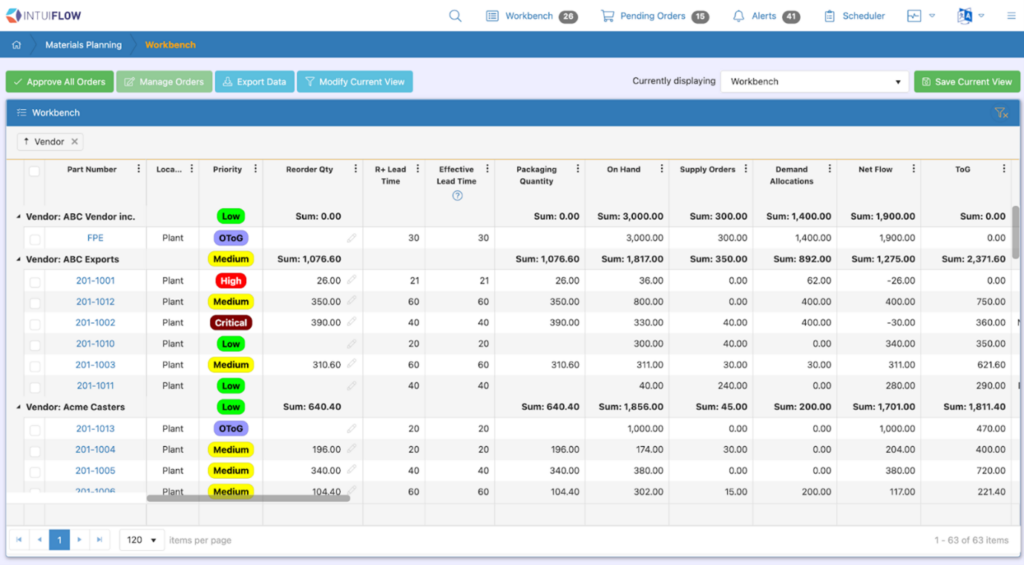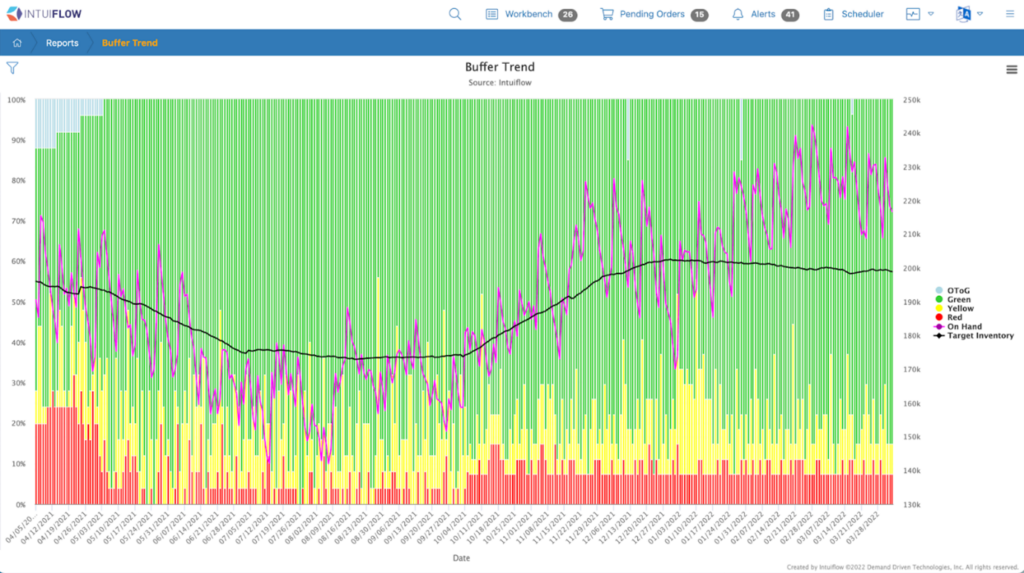Every manufacturer is faced with change sooner or later. In the 21st century, there have been many such changes, from innovative supply chain technologies to new methods to improve the quality of products, or even the entire supply chain management system.
Before you embark on such a time-consuming change, you may have some fear: what if it doesn’t work?
How do you prepare your company so that the change takes root and has a positive long-term effect? In this article, we share a few situations we’ve encountered in different countries.
In particular, we will take a look at the lessons we’ve learned leading supply chain transformations in industrial and distribution companies. These are real-life insights from the work we’ve done while implementing Intuiflow, a cloud-based IT solution that leverages the Demand Driven methodology, at companies around the world.
If you’ve decided to implement Demand Driven methods to automate your entire supply chain, you can apply these lessons to your own company to determine what needs to change at the operational and strategic levels. That way, you’ll maximize the benefits you receive from these new techniques, from optimized inventory to increased service levels.
Step One: Process Audit
The first step in implementing any new supply chain technology is a conducting process audit. During this step, you’ll describe your current business processes in terms of supply chain management, with a particular focus on inventory management.
Let’s see what types of situations our technology specialists encounter during this audit.
Focus #1: Data Maintenance
The impact of the human factor on data (its modification, establishment, and maintenance over time) must be considered when implementing innovations.
We have encountered many companies that do not have a structured workflow for maintaining technical data, whether it’s because:
- The data is not always maintained in the common ERP system
- There is no procedure for maintaining data, or it is not followed rigorously
As a result, each person customizes the data maintenance in their own way, on their own spreadsheet. The data is chaotic and unstructured. The risk of error is high.
Some examples we’ve encountered:
- Data entry errors
- Forgetting to transfer data from the email to the spreadsheet, or data was accidentally deleted / not saved
- Invalid file format or data type
- Many operators work with a spreadsheet, but each of them has their own algorithms or formulas that can cause errors / misunderstandings / omissions of information during synchronization
In fact, studies have show that almost 90% of spreadsheets contain errors.
“The most important thing is to set the incoming data correctly. Intuiflow works properly if the initial data is correct: it will recommend what to produce, what to buy, and when,” confirms Vladimir Ropalo, supply chain manager at Monomakh, a consumer products company.
Since the system is only a mirror of the information it imports, it is necessary to configure the import process correctly. That way, the algorithms will calculate everything, build graphs, and present the data in intuitive tables.


Tip: Store the data in your company’s reference system. Excel is not a reference database. The data is maintained in the ERP, which allows you to trace by whom, when, and how anything was changed. Master data must be visible and intuitive to everyone. You would be surprised to see how much data resides in Excel sheets rather than in the ERP in some companies.
Focus #2: Availability of Skills
Every company has many different projects and priorities. Especially if you are in a rapid growth phase, it can be difficult to find the expertise to implement new projects.
Usually, companies establish a project team to launch the project after the initial assessment. This team must have a core of expertise; these people will establish and follow the tasks and decisions that are critical to the whole company. They will also manage the system and mentor the new planners.
But due to the rapid growth of the company and the lack of specialists, a situation arises after a few months: the experts in our core competence are transferred to another department. Someone is promoted, someone resigns, and, as a result, people leave the project. You lose your leaders. The new planners lack the information they need, and the project slows down again. If none of the new team members dig deep to understand the original plan and its complexities, you risk having to start all over from the beginning.
Tip: The recommendation is to create a structural core of competence. This means maintaining expertise within a core team regardless of subsequent organizational changes.
Your practitioners need the support of a reference team, not just one expert (this is especially important for large companies). It is this team that supports the end users and is made up of system and methodology experts. Once the consultants you are working with have completed the project and left the company, this reference team will continue to drive further innovation and improvement.
In the next article, we’ll look at two other lessons to keep in mind while implementing new supply chain technology!












